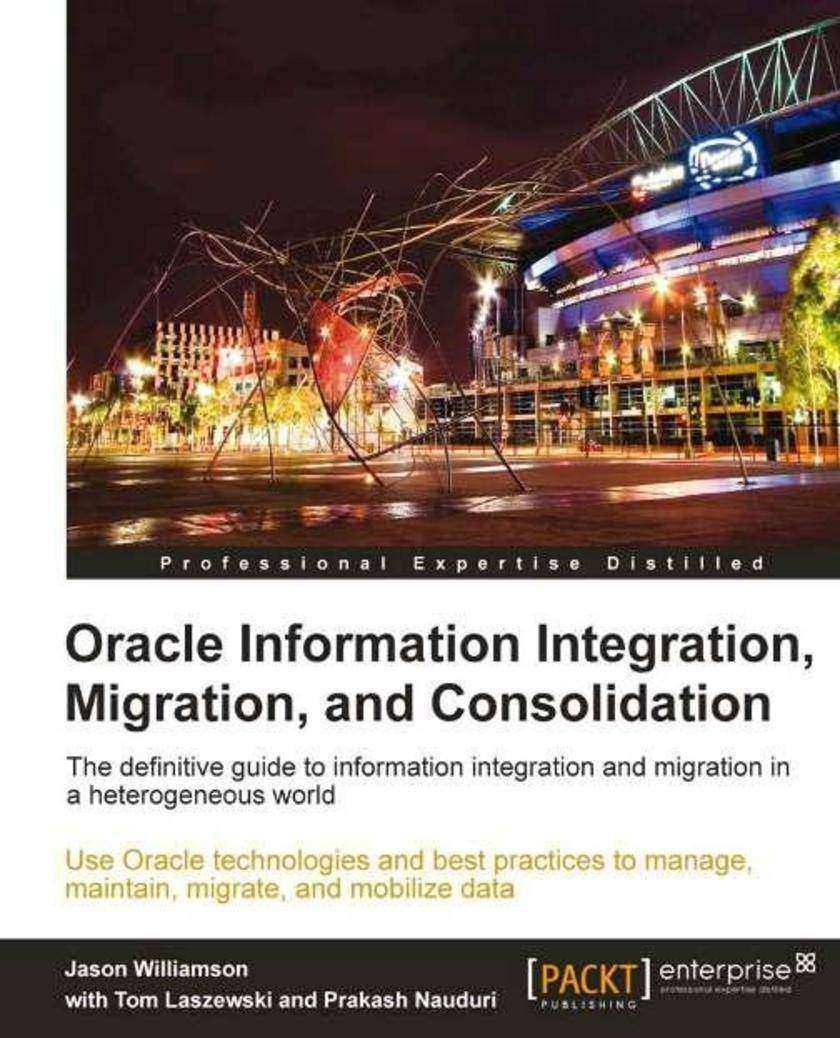
Oracle Information Integration, Migration, and Consolidation
¥99.18
This enormously practical guide, interspersed with numerous real-life case studies and actual business scenarios, shows readers when, where, and how to use Oracle's wide range of data integration products. If you are a DBA, application or data architect, or data integration specialist who is running an Oracle database or middleware and you want to learn about the latest on Oracle's information integration platform, then this book is for you. You can also benefit from this book if you are an application developer or technical and project lead with a focus on master data management, data warehousing, and data consolidation. You should have working experience with Oracle Database, data integration, consolidation, and migration, as well as some familiarity with integration middleware products and information service buses.
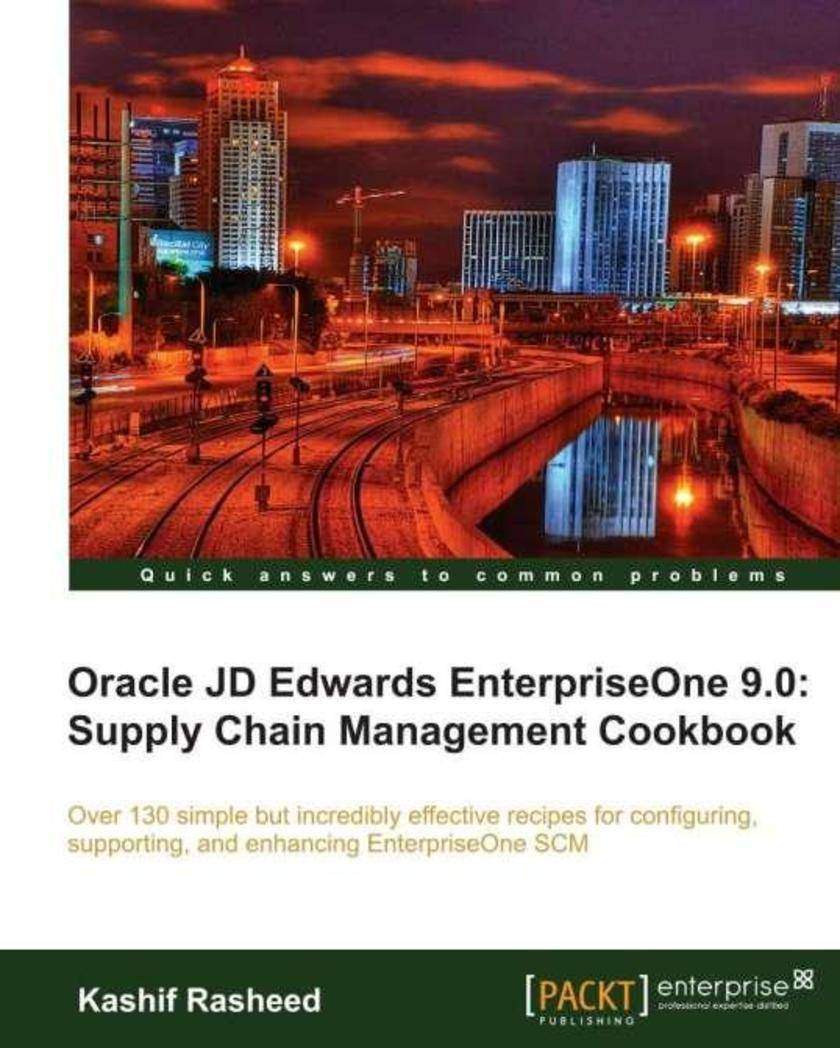
Oracle JD Edwards EnterpriseOne 9.0: Supply Chain Management Cookbook
¥99.18
A cookbook full of practical and immediately useable recipes for real world business implementation of EnterpriseOne Supply Chain Management. If you are a functional consultant, technical consultant/developer, or project manager and want to improve your business perspective of EnterpriseOne SCM, this book is for you. You should have basic knowledge of navigating EnterpriseOne and general supply chain familiarity. Knowledge of the Common Foundation JDE 9.0 module is advantageous; the supply chain business domain knowledge will be an add-on to this.
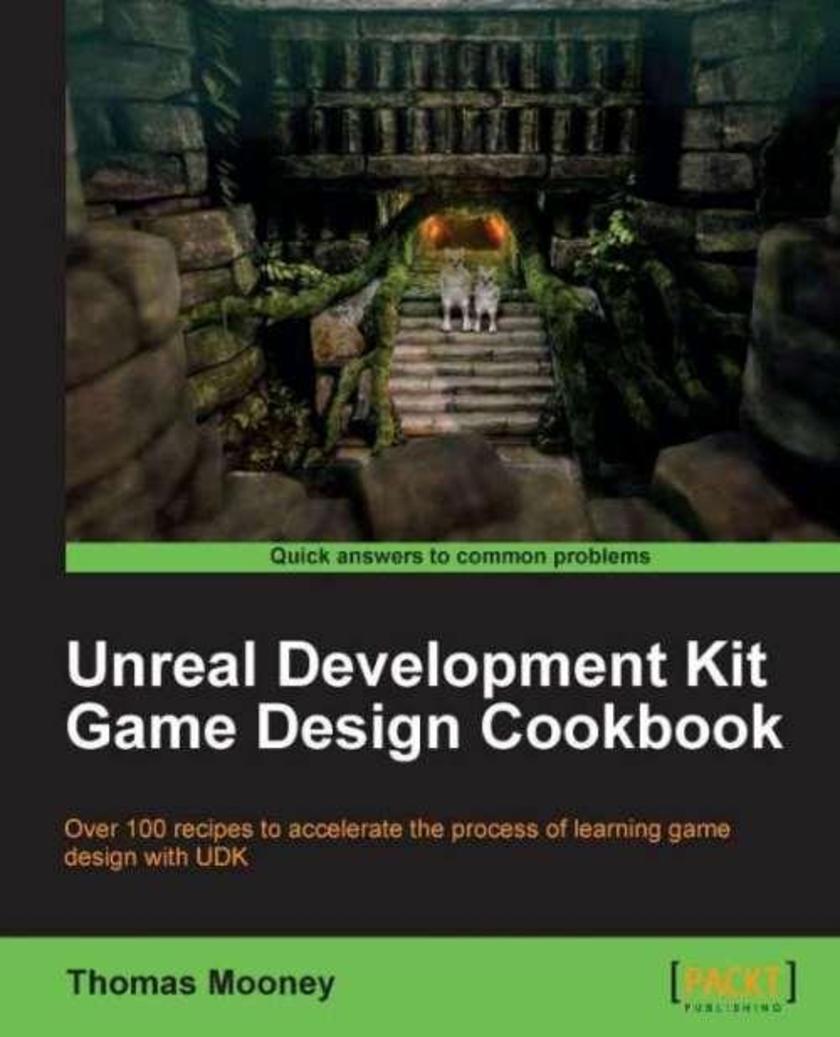
Unreal Development Kit Game Design Cookbook
¥99.18
Written in cookbook style, this book offers many recipes to learn game design with UDK. Each recipe contains step-by-step instructions followed by analysis of what was done in each task and other useful information. The book is designed so that you can read it chapter by chapter, or you can look at the list of recipes and refer to them in no particular order. This book is meant for game artists who are getting used to UDK but may feel the need for guidance on matters of implementation. It also targets brave beginners who are struggling to find an all in one package for getting started with UDK, and want a ready to hand reference. Level designers can use this book to gauge their understanding of the editor, check for specific problems, and discover gems they may not have come across before.
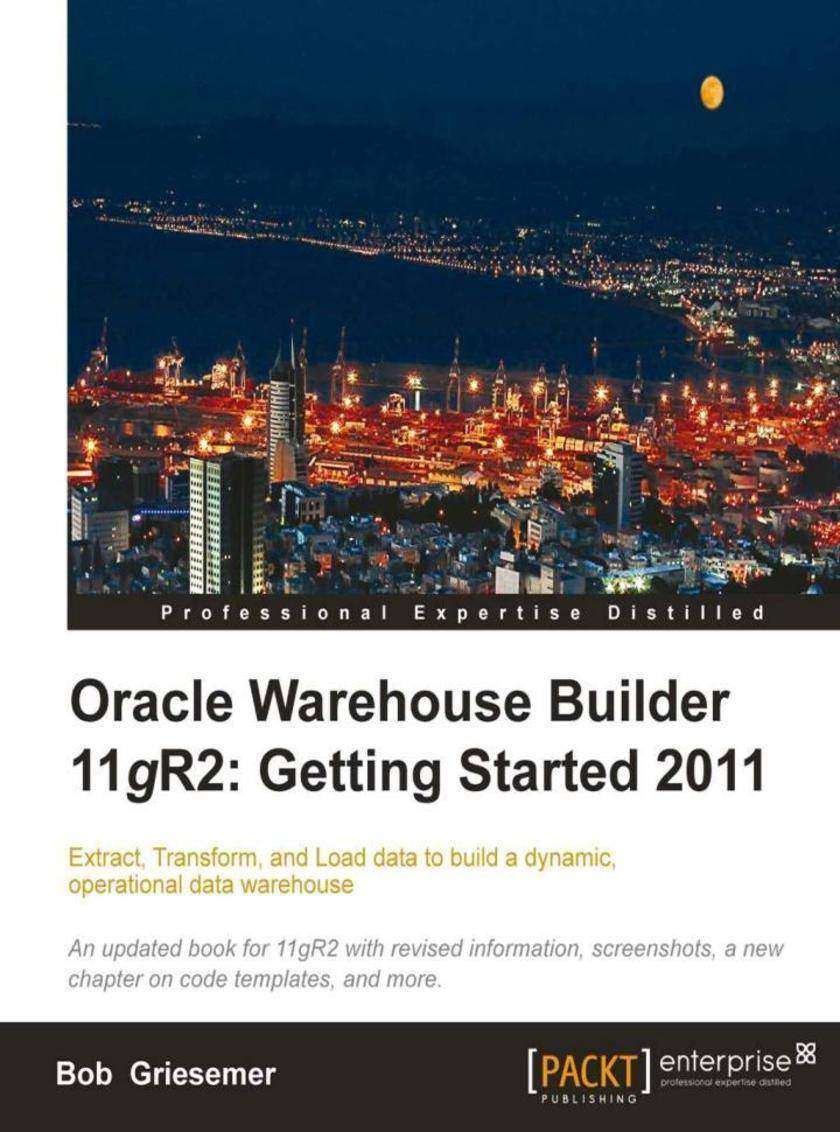
Oracle Warehouse Builder 11g R2: Getting Started 2011
¥99.18
This easy-to-understand tutorial covers Oracle Warehouse Builder from the ground up, and taps into the author's wide experience as a software and database engineer. Written in a relaxed style with step-by-step explanations, lots of screenshots are provided throughout the book. There are numerous tips and helpful hints throughout that are not found in the original documentation. By following this book, you can use Oracle Warehouse Builder in the best possible way and maximize your learning potential. This book is an update of Oracle Warehouse Builder 11g: Getting Started. This book is a good starting point for database engineers, administrators, and architects who are responsible for data warehouse projects and need to design them and load data into them. If you are someone who wants to learn Oracle Warehouse Builder and expand your knowledge of the tool and data warehousing, this is an ideal book for you. No prior data warehouse or database experience is presumed. All new database and data warehouse technical terms and concepts explained in clear easy-to-understand language.
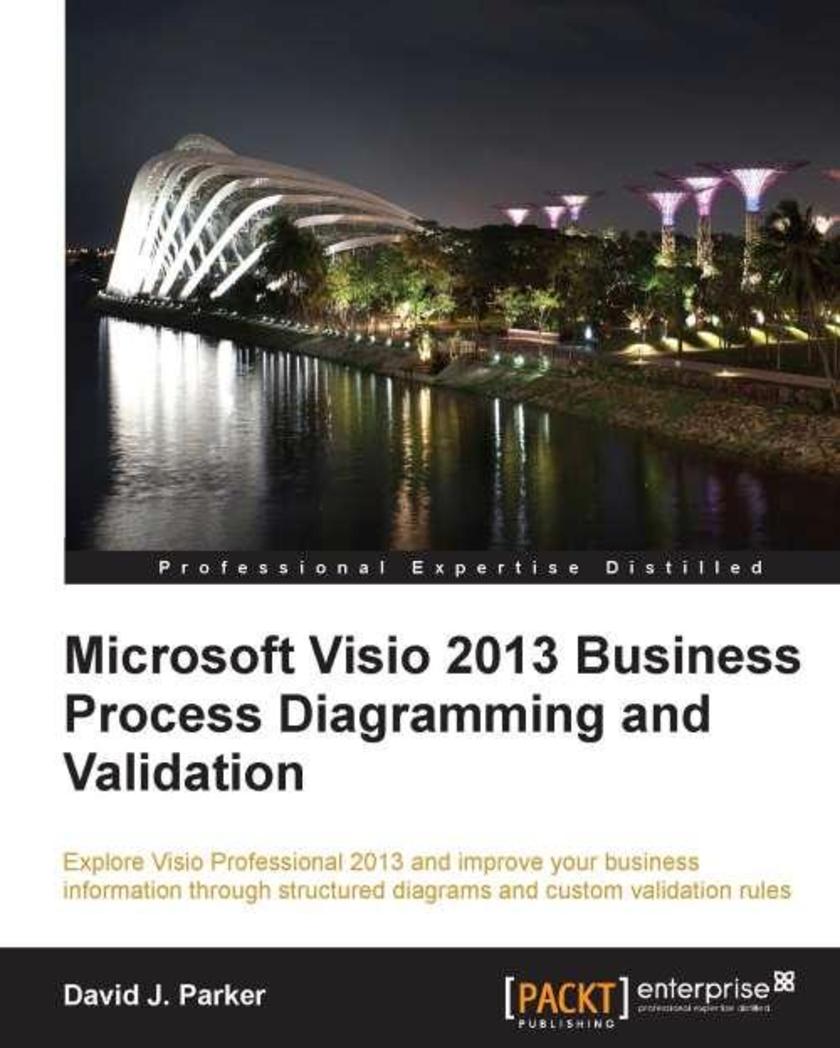
Microsoft Visio 2013 Business Process Diagramming and Validation
¥99.18
Microsoft Visio 2013 Business Process Diagramming and Validation provides a comprehensive and practical tutorial including example code and demonstrations for creating validation rules, writing ShapeSheet formulae, and much more.If you are a Microsoft Visio 2013 Professional Edition power user or developer who wants to get to grips with both the essential features of Visio 2013 and the validation rules in this edition, then this book is for you. A working knowledge of Microsoft Visio and optionally .NET for the add-on code is required, though previous knowledge of business process diagramming is not necessary. More experienced Visio users will gain valuable knowledge regarding building add-ons and creating and publishing rules. If you want to achieve results from Visio 2013 beyond the ordinary out-of-the-box features, then this book is ideal for you. Microsoft Visio 2013 Business Process Diagramming and Validation provides a comprehensive and practical tutorial including example code and demonstrations for creating validation rules, writing ShapeSheet formulae, and much more.
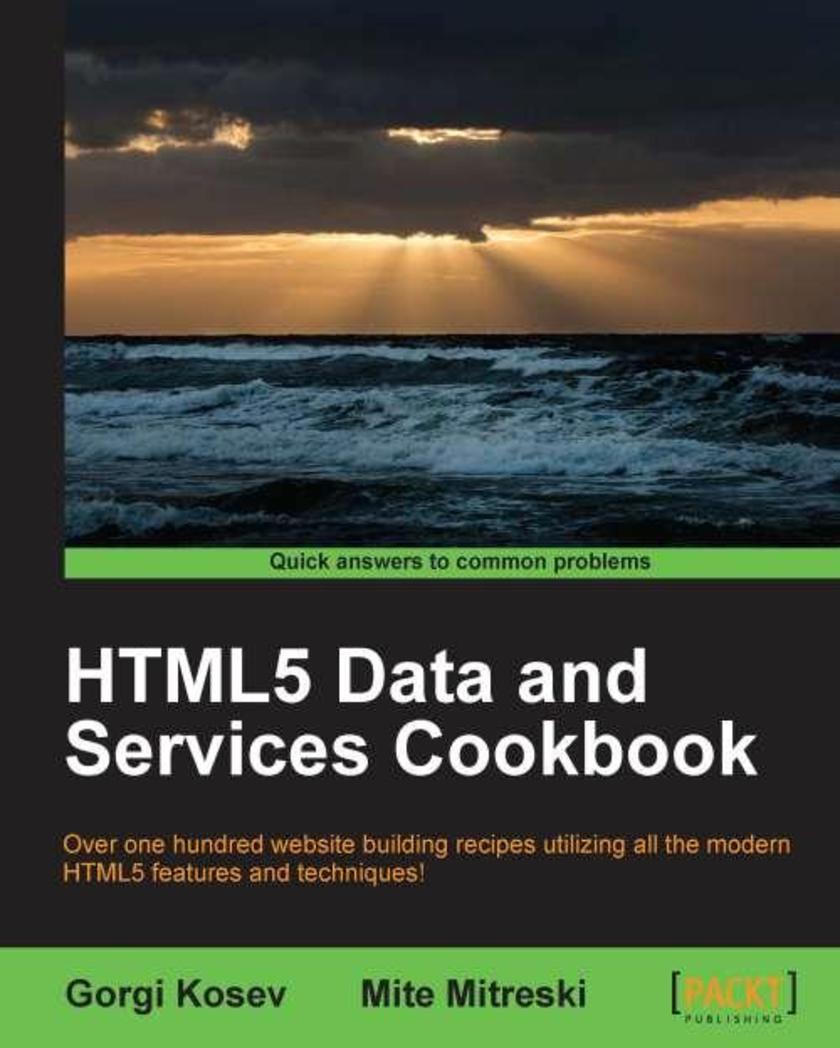
HTML5 Data and Services Cookbook
¥99.18
A practical approach with hands on recipes to learn more about HTML5 Data and Services, its features and techniques when building websites or web applications.This book is for programmers and developers who work with a lot of backend code and want to get fast tracked into the world of HTML5 and Java*. It is also for JavaScript developers who would like to update their knowledge with new techniques and capabilities made possible with HTML5.Some experience in HTML and jQuery is assumed.
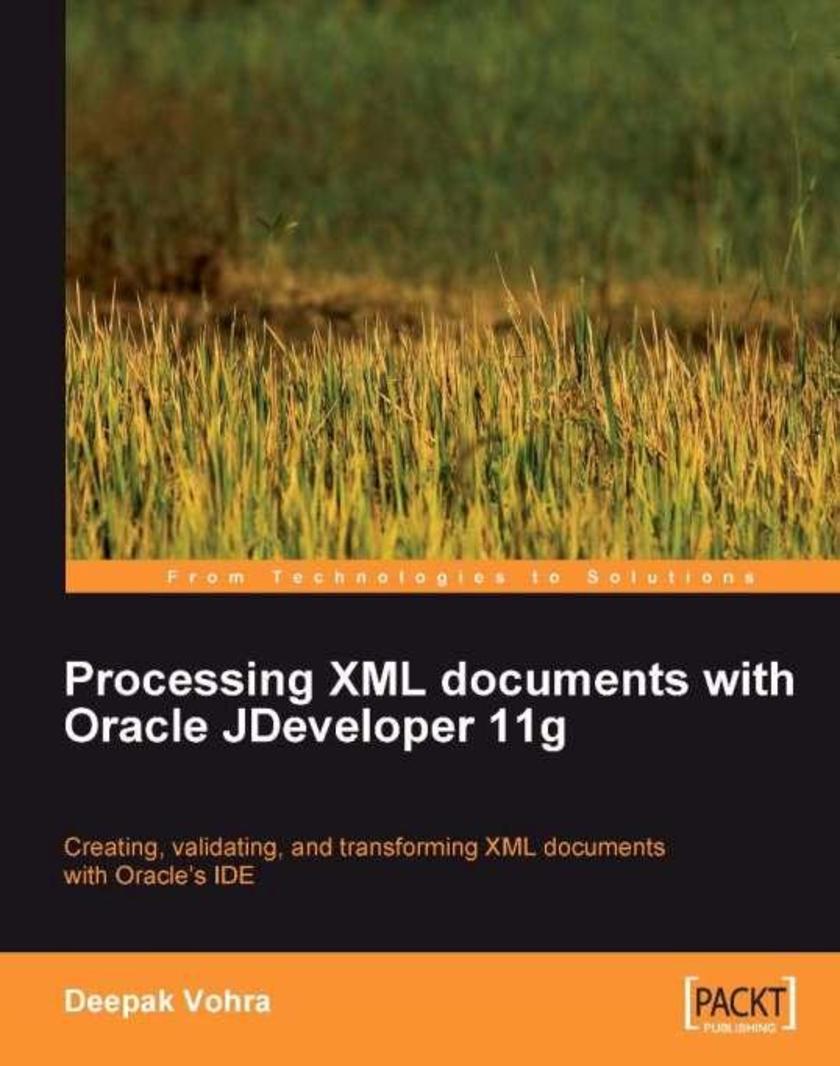
Processing XML documents with Oracle JDeveloper 11g
¥99.18
This book is for newcomer and intermediate Java developers who want to work with XML documents using JDeveloper 11g. No previous knowledge of JDeveloper is assumed but the reader will need to be comfortable in XML and Java environments. Employing a comprehensive tutorial-based approach, this easy-to-follow book shows the reader various means of processing XML documents using the power of Oracle's JDeveloper 11g. In next to no time, the reader will be able to create, format, transform, compare, and schema validate XML documents with Oracle's IDE.
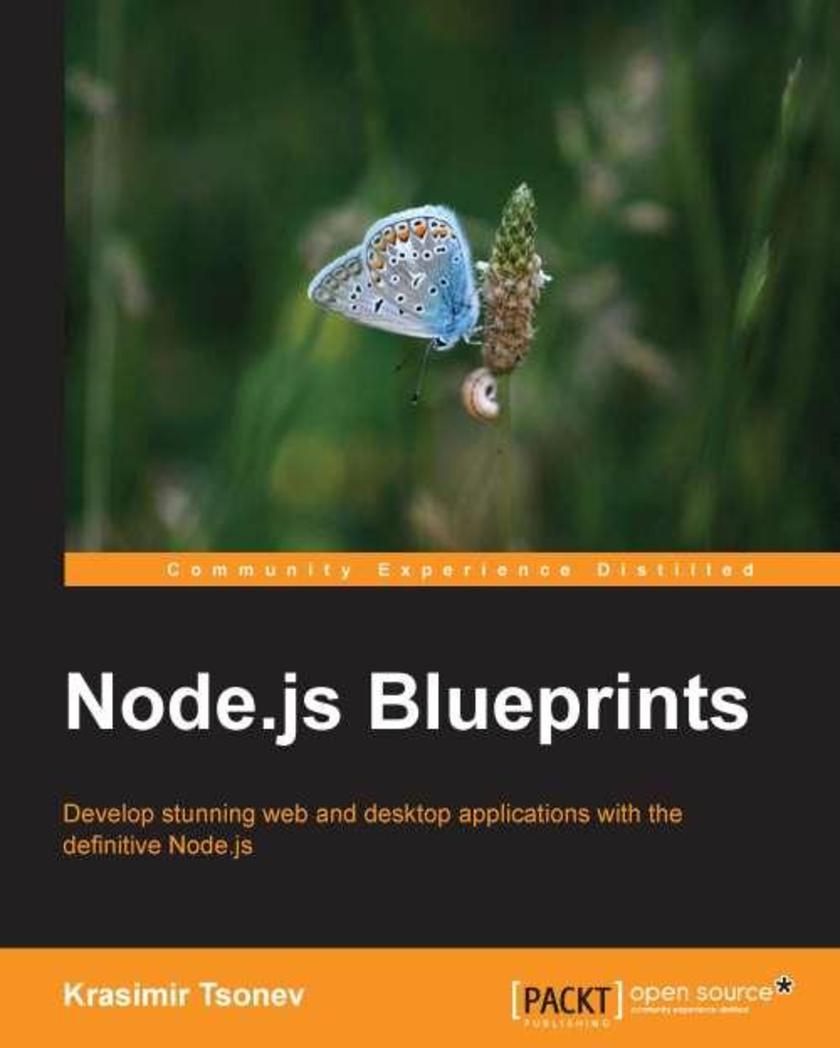
Node.js Blueprints
¥99.18
A straightforward, practical guide containing step-by-step tutorials that will push your Node.js programming skills to the next level. If you are a web developer with experience in writing client-side JavaScript and want to discover the fascinating world of Node.js to develop fast and efficient web and desktop applications, then this book is for you.
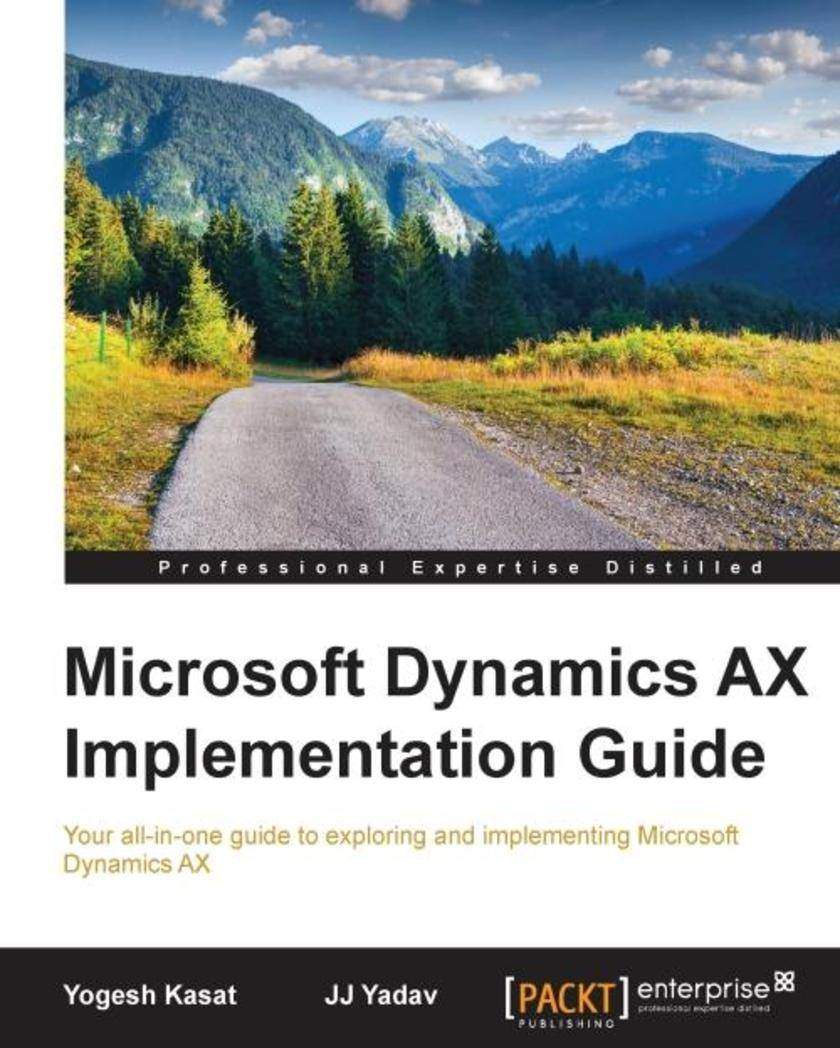
Microsoft Dynamics AX Implementation Guide
¥99.18
Your all-in-one guide to exploring and implementing Microsoft Dynamics AX About This Book From project kick-off to go live and upgrade, learn what to expect in each phase of the project This book guides you through the entire journey of a Dynamics AX implementation project, helping you to avoid the common pitfalls and adapt industry knowledge and best practices for your own project This one-stop guide is packed with key tools and techniques to aid your Dynamics AX implementation Who This Book Is For This book is for IT project managers, solution architects, and consultants who are planning to implement or are in the process of implementing or upgrading Dynamics AX. To use this book, you must have a working Dynamics AX system in place and must be familiar with the basics of Dynamics AX. What You Will Learn Prepare for a great start with effective project management and planning from the beginning Gather details early using effective requirement-gathering tools and techniques Gain tools and techniques for effective infrastructure planning and hardware sizing Get to grips with integration and data migration through planning and strategy Familiarize yourself with the reporting and BI tools Master functional and technical design to customize existing features and designs in your own projects Manage your configuration and you’re your configuration from one environment to another Learn industry’s best practices and recommendations on customization development and performance tuning In Detail Microsoft Dynamics AX is Enterprise Resource Planning (ERP) software that supports multi-site operations across various countries, providing international processing within the company. It is an ERP solution with a lot of features and functionality, and it provides support across the fields of financial, distribution, supply chain, project, customer relationship, HR, and field service management. This book is all about simplifying the overall implementation process of Dynamics AX. The purpose of this book is to help IT managers and solution architects implement Dynamics AX to increase the success rate of Dynamics AX projects. This all-in-one guide will take you through an entire journey of a Dynamics AX implementation, ensuring you avoid commonly-made mistakes during implementation. You’ll begin with the installation of Dynamics AX and the basic requirements. Then, you’ll move onto data migration, reporting, functional and technical design, configuration, and performance tuning. By the end of the book, you will know how to plan and execute Dynamics AX right, on your first attempt, using insider industry knowledge and best practices. Style and approach This is a progressive, easy-to-follow book that summarizes numerous aspects you need to know to make your Dynamics AX implementations successful using code examples to get you hands-on.
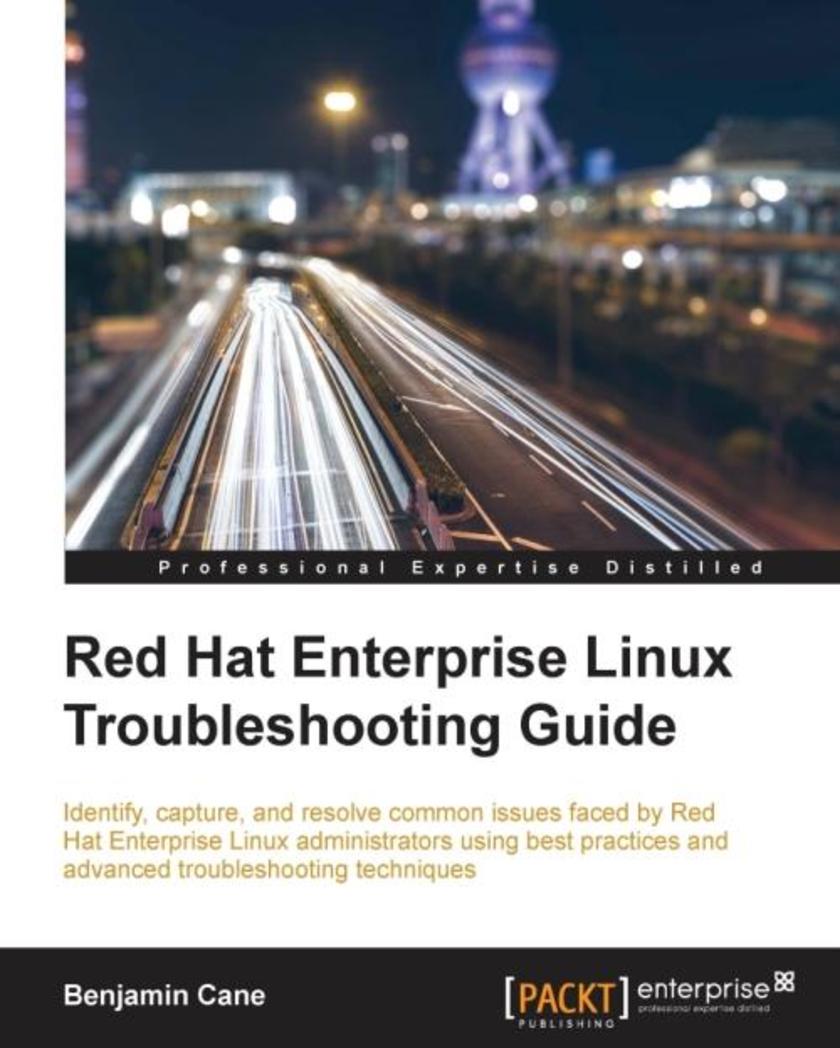
Red Hat Enterprise Linux Troubleshooting Guide
¥99.18
Identify, capture and resolve common issues faced by Red Hat Enterprise Linux administrators using best practices and advanced troubleshooting techniquesAbout This BookDevelop a strong understanding of the base tools available within Red Hat Enterprise Linux (RHEL) and how to utilize these tools to troubleshoot and resolve real-world issuesGain hidden tips and techniques to help you quickly detect the reason for poor network/storage performanceTroubleshoot your RHEL to isolate problems using this example-oriented guide full of real-world solutions Who This Book Is For If you have a basic knowledge of Linux from administration or consultant experience and wish to add to your Red Hat Enterprise Linux troubleshooting skills, then this book is ideal for you. The ability to navigate and use basic Linux commands is expected.What You Will LearnIdentify issues that need rapid resolution against long term root cause analysisDiscover commands for testing network connectivity such as telnet, netstat, ping, ip and curlSpot performance issues with commands such as top, ps, free, iostat, and vmstatUse tcpdump for traffic analysisRepair a degraded file system and rebuild a software raidIdentify and troubleshoot hardware issues using dmesgTroubleshoot custom applications with strace and knowledge of Linux resource limitations In Detail Red Hat Enterprise Linux is an operating system that allows you to modernize your infrastructure, boost efficiency through virtualization, and finally prepare your data center for an open, hybrid cloud IT architecture. It provides the stability to take on today's challenges and the flexibility to adapt to tomorrow's demands. In this book, you begin with simple troubleshooting best practices and get an overview of the Linux commands used for troubleshooting. The book will cover the troubleshooting methods for web applications and services such as Apache and MySQL. Then, you will learn to identify system performance bottlenecks and troubleshoot network issues; all while learning about vital troubleshooting steps such as understanding the problem statement, establishing a hypothesis, and understanding trial, error, and documentation. Next, the book will show you how to capture and analyze network traffic, use advanced system troubleshooting tools such as strace, tcpdump & dmesg, and discover common issues with system defaults. Finally, the book will take you through a detailed root cause analysis of an unexpected reboot where you will learn to recover a downed system.Style and approach This is an easy-to-follow guide packed with examples of real-world core Linux concepts. All the topics are presented in detail while you’re performing the actual troubleshooting steps.
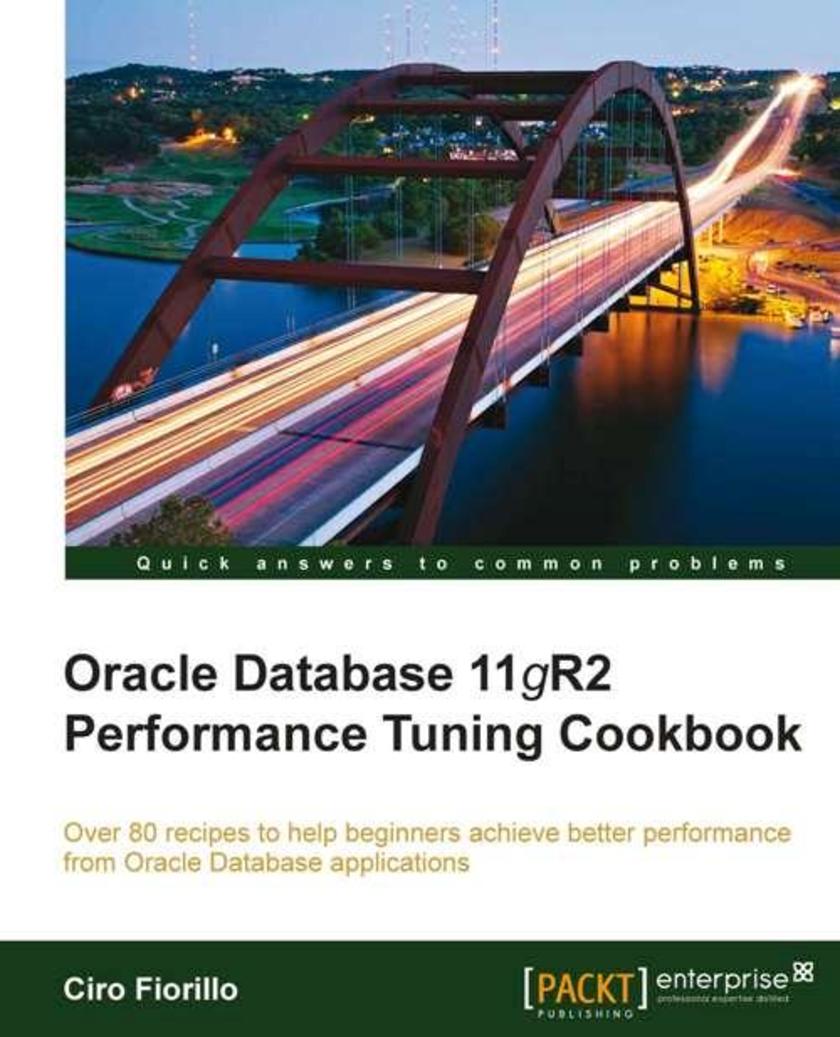
Oracle Database 11g R2 Performance Tuning Cookbook
¥99.18
In this book you will find both examples and theoretical concepts covered. Every recipe is based on a */procedure explained step-by-step, with screenshots, while theoretical concepts are explained in the context of the recipe, to explain why a solution performs better than another. This book is aimed at software developers, software and data architects, and DBAs who are using or are planning to use the Oracle Database, who have some experience and want to solve performance problems faster and in a rigorous way. If you are an architect who wants to design better applications, a DBA who is keen to dig into the causes of performance issues, or a developer who wants to learn why and where the application is running slow, this is the book for you. Basic knowledge of SQL language is required and general knowledge of the Oracle Database architecture is preferable.
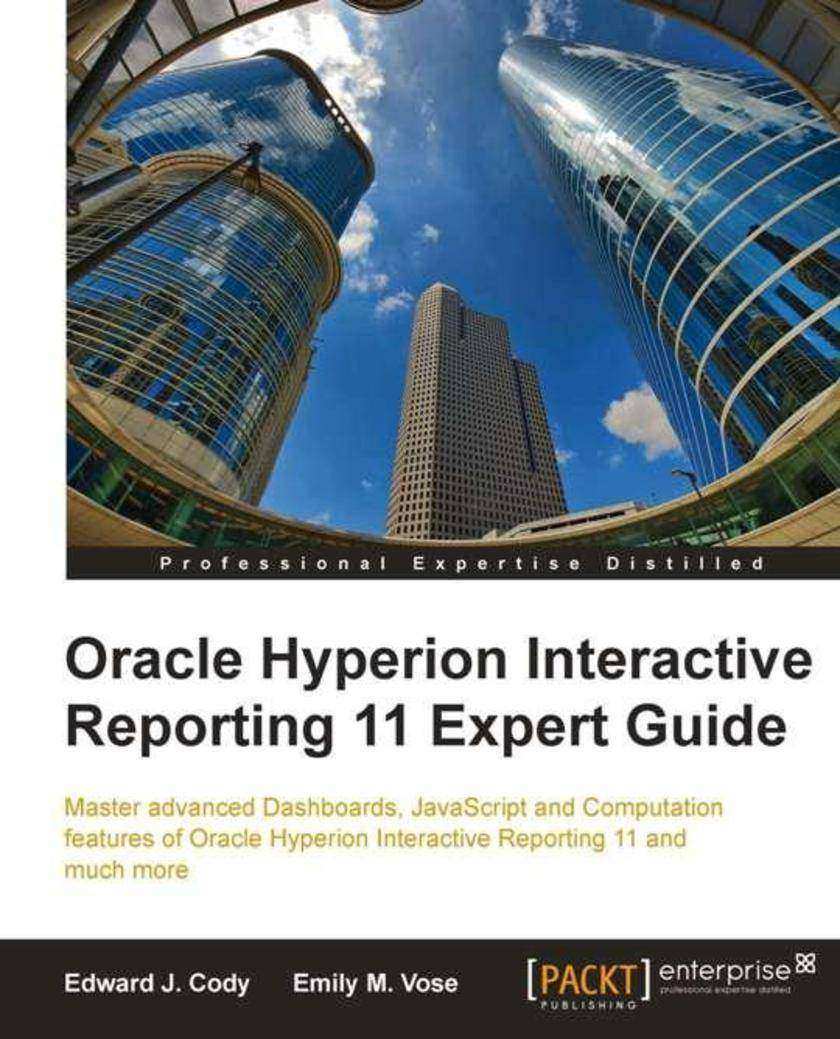
Oracle Hyperion Interactive Reporting 11 Expert Guide
¥99.18
This book is written in a simple, easy to understand format with screenshots, code samples, and step-by-step explanations that will guide you through the advanced techniques used by the experts. If you are an Oracle Hyperion Interactive reporting user or developer looking to become an expert in the product, then this book is for you. You will require a basic knowledge of Interactive Reporting, as this book starts with a brief overview and then dives into advanced techniques, functions, and best practices. Beginner users should consult The Business Analyst’s Guide to Oracle Hyperion Interactive Reporting 11 to gain insight on the software product.
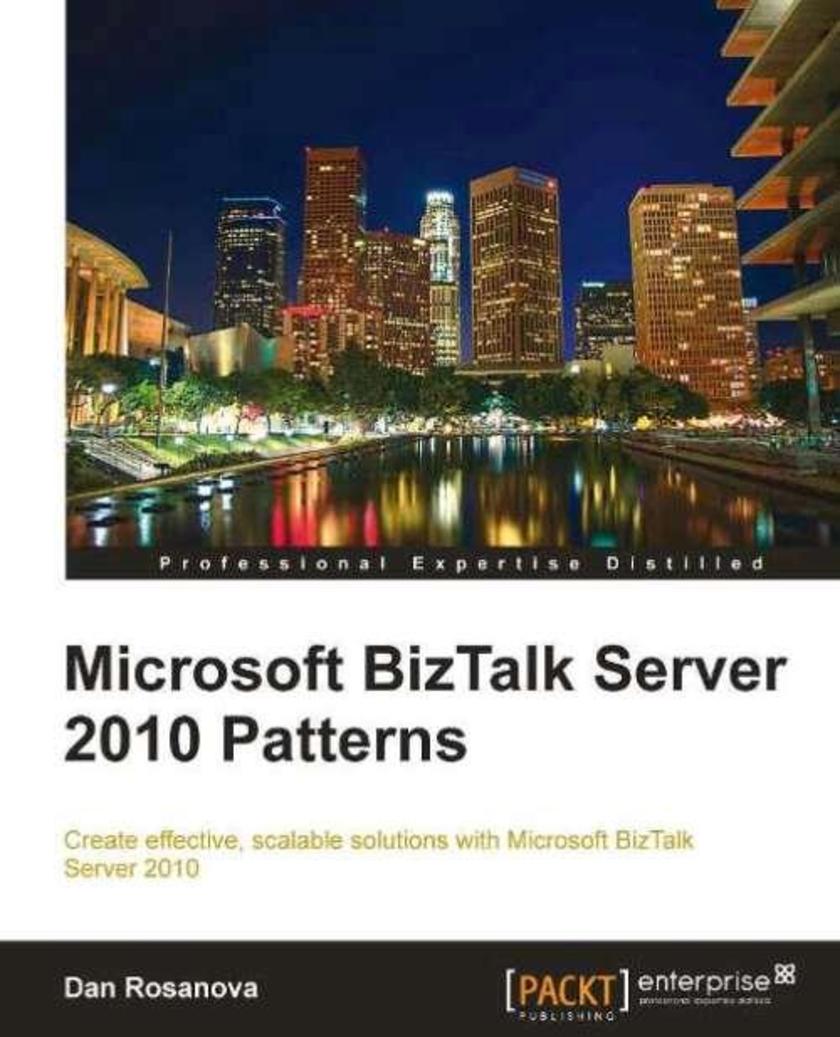
Biztalk server 2010 patterns
¥99.18
This book is broken into two distinct parts. The first is a general introduction to BizTalk Server 2010 as well as the patterns commonly used in solutions built on the platform. It also includes explanations and motivations for these core patterns and practices. The second part is a hands-on real world example presented in a step-by-step manner that takes the reader through a multiphase solution and builds this simple project into a robust and complex middleware integration solution. This book is targeted at the professional developer or architect tasked with creating solutions that leverage BizTalk Server 2010. It assumes experience with Visual Studio and at least a minimal exposure to any version of BizTalk Server from 2004 to the present. Development managers with a technical background will also find this book useful in guiding their implementation teams. Cursory knowledge of XML, although useful, is not required; the text does include an XML primer in the appendix. Advanced BizTalk developers will learn many tips and techniques to improve the solutions they develop on the BizTalk 2010 platform.
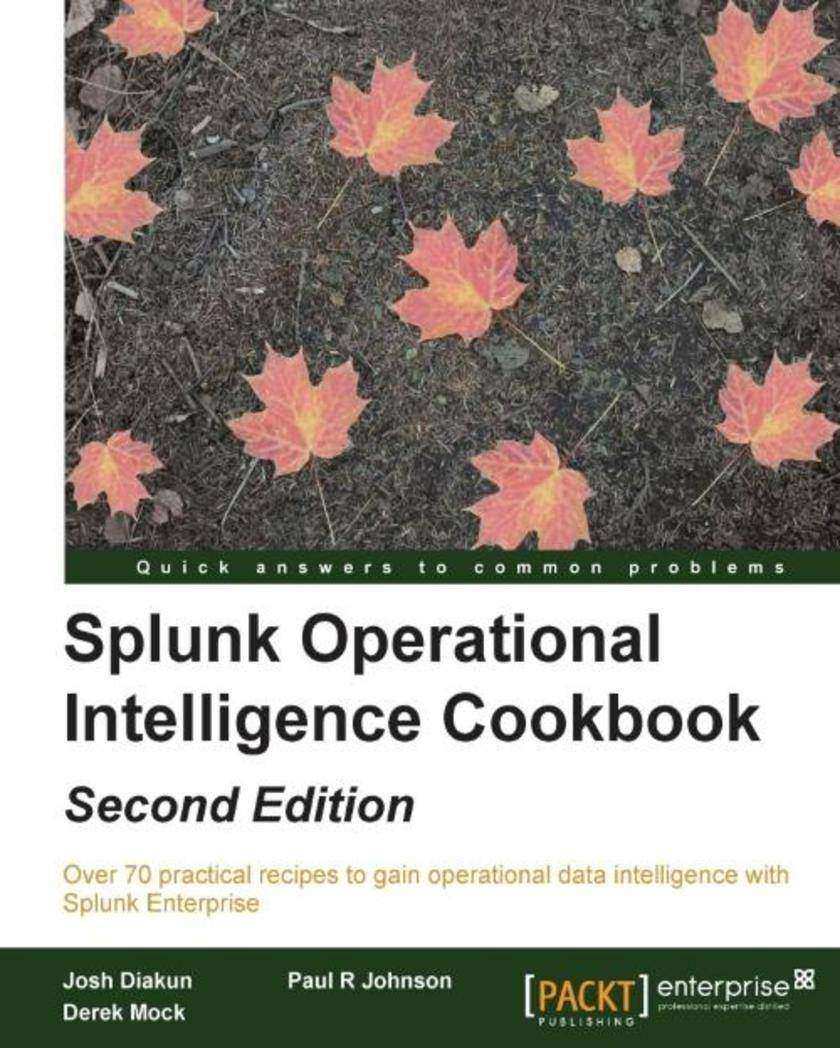
Splunk Operational Intelligence Cookbook - Second Edition
¥99.18
Over 70 practical recipes to gain operational data intelligence with Splunk Enterprise About This Book This is the most up-to-date book on Splunk 6.3 and teaches you how to tackle real-world operational intelligence scenarios efficiently Get business insights using machine data using this easy-to-follow guide Search, monitor, and analyze your operational data skillfully using this recipe-based, practical guide Who This Book Is For This book is intended for users of all levels who are looking to leverage the Splunk Enterprise platform as a valuable operational intelligence tool. The recipes provided in this book will appeal to individuals from all facets of business, IT, security, product, marketing, and many more! Also, existing users of Splunk who want to upgrade and get up and running with Splunk 6.3 will find this book invaluable. What You Will Learn Use Splunk to gather, analyze, and report on data Create dashboards and visualizations that make data meaningful Build an operational intelligence application with extensive features and functionality Enrich operational data with lookups and workflows Model and accelerate data and perform pivot-based reporting Build real-time, *ed, and other intelligence-driven alerts Summarize data for longer term trending, reporting, and analysis Integrate advanced JavaScript charts and leverage Splunk's API In Detail Splunk makes it easy for you to take control of your data, and with Splunk Operational Cookbook, you can be confident that you are taking advantage of the Big Data revolution and driving your business with the cutting edge of operational intelligence and business analytics. With more than 70 recipes that demonstrate all of Splunk’s features, not only will you find quick solutions to common problems, but you’ll also learn a wide range of strategies and uncover new ideas that will make you rethink what operational intelligence means to you and your organization. You’ll discover recipes on data processing, searching and reporting, dashboards, and visualizations to make data shareable, communicable, and most importantly meaningful. You’ll also find step-by-step demonstrations that walk you through building an operational intelligence application containing vital features essential to understanding data and to help you successfully integrate a data-driven way of thinking in your organization. Throughout the book, you’ll dive deeper into Splunk, explore data models and pivots to extend your intelligence capabilities, and perform advanced searching to explore your data in even more sophisticated ways. Splunk is changing the business landscape, so make sure you’re taking advantage of it. Style and approach Splunk is an excellent platform that allows you to make sense of machine data with ease. The adoption of Splunk has been huge and everyone who has gone beyond installing Splunk wants to know how to make most of it. This book will not only teach you how to use Splunk in real-world scenarios to get business insights, but will also get existing Splunk users up to date with the latest Splunk 6.3 release.
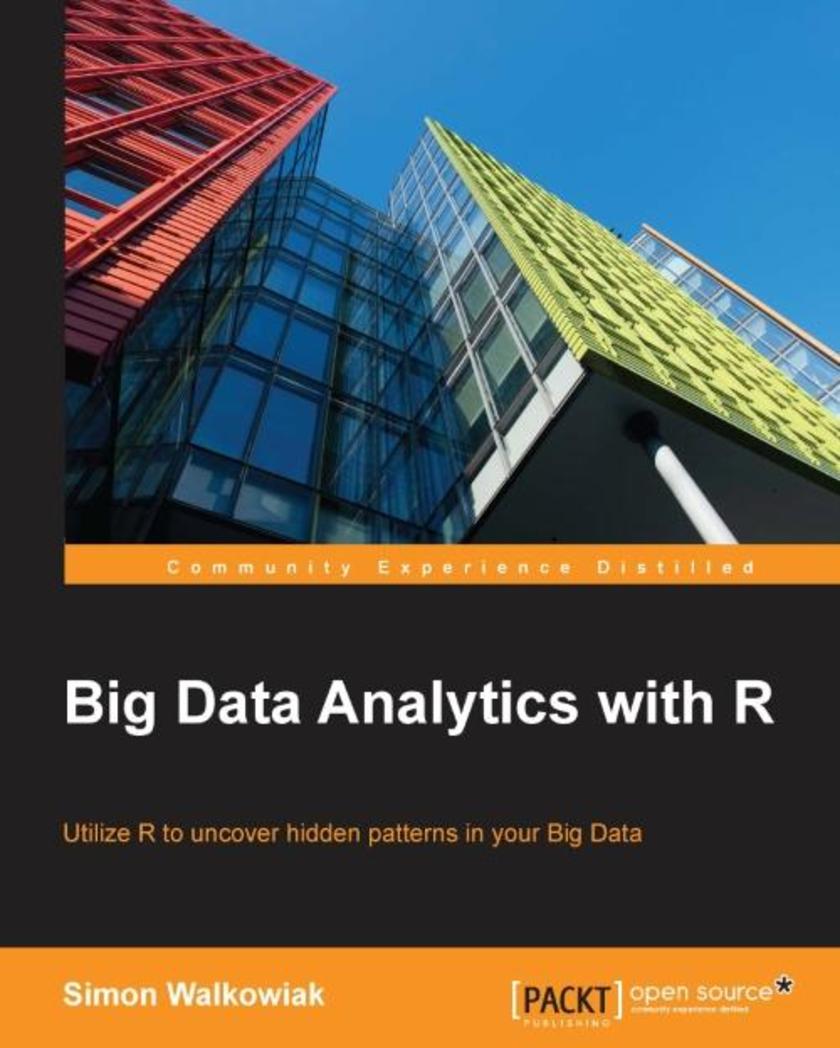
Big Data Analytics with R
¥99.18
Utilize R to uncover hidden patterns in your Big Data About This Book Perform computational analyses on Big Data to generate meaningful results Get a practical knowledge of R programming language while working on Big Data platforms like Hadoop, Spark, H2O and SQL/NoSQL databases, Explore fast, streaming, and scalable data analysis with the most cutting-edge technologies in the market Who This Book Is For This book is intended for Data Analysts, Scientists, Data Engineers, Statisticians, Researchers, who want to integrate R with their current or future Big Data workflows. It is assumed that readers have some experience in data analysis and understanding of data management and algorithmic processing of large quantities of data, however they may lack specific skills related to R. What You Will Learn Learn about current state of Big Data processing using R programming language and its powerful statistical capabilities Deploy Big Data analytics platforms with selected Big Data tools supported by R in a cost-effective and time-saving manner Apply the R language to real-world Big Data problems on a multi-node Hadoop cluster, e.g. electricity consumption across various socio-demographic indicators and bike share scheme usage Explore the compatibility of R with Hadoop, Spark, SQL and NoSQL databases, and H2O platform In Detail Big Data analytics is the process of examining large and complex data sets that often exceed the computational capabilities. R is a leading programming language of data science, consisting of powerful functions to tackle all problems related to Big Data processing. The book will begin with a brief introduction to the Big Data world and its current industry standards. With introduction to the R language and presenting its development, structure, applications in real world, and its shortcomings. Book will progress towards revision of major R functions for data management and transformations. Readers will be introduce to Cloud based Big Data solutions (e.g. Amazon EC2 instances and Amazon RDS, Microsoft Azure and its HDInsight clusters) and also provide guidance on R connectivity with relational and non-relational databases such as MongoDB and HBase etc. It will further expand to include Big Data tools such as Apache Hadoop ecosystem, HDFS and MapReduce frameworks. Also other R compatible tools such as Apache Spark, its machine learning library Spark MLlib, as well as H2O. Style and approach This book will serve as a practical guide to tackling Big Data problems using R programming language and its statistical environment. Each section of the book will present you with concise and easy-to-follow steps on how to process, transform and analyse large data sets.
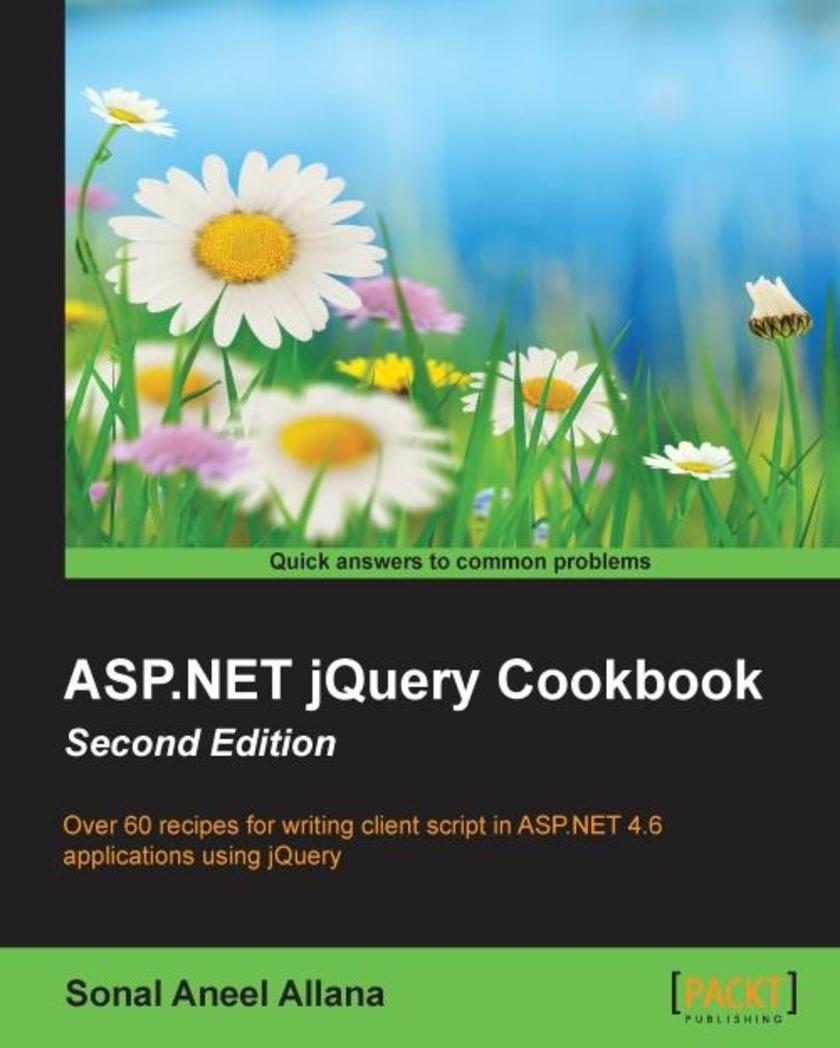
ASP.NET jQuery Cookbook - Second Edition
¥99.18
Over 60 recipes for writing client * in ASP.NET 4.6 applications using jQueryAbout This BookThis is a step-by-step guide to solve common problems in ASP.NET applicationsEasy-to-follow recipes to write client *s effortlessly and quicklyA hands-on approach that will show you how to interface jQuery with ASP.NET websites and MVCWho This Book Is ForThis book is for ASP.NET developers who want to use jQuery to write client *s for cross-browser compatibility. The book assumes no prior knowledge of ASP.NET or jQuery, and every recipe is self-contained and explained in an easy-to-follow manner. Familiarity with Visual Studio and MS SQL Server is preferred, but not compulsory.What You Will LearnDownload and include jQuery in ASP.NET websites and MVCUse jQuery selectors with ASP.NET server controlsGet to know about event handling and DOM traversalDeploy jQuery for visual effects and animationsDevelop AJAX-enabled ASP.NET applicationsCreate your own pluginsSolve common problems using less code and cut down your development timeIn DetailjQuery is a lightweight JavaScript library that has changed the landscape of client *ing in web applications. Developed by John Resig in 2006, it has taken the web by storm because of its cross-browser compatibility and the ability to get more done with less code. It has gained popularity with ASP.NET developers and is now distributed with Visual Studio and the NuGet package manager.ASP.NET jQuery Cookbook explores the wide range of utilities that the jQuery library provides. It teaches you the nitty-gritty of plugging in these features in ASP.NET web applications. It covers every aspect of interfacing the library, right from downloading and including jQuery on web pages to selecting controls, handling events, and creating animations. This book also walks you through DOM traversal and manipulation in ASP.NET and then through visual effects and graphics in ASP.NET sites. It explores advanced features such as posting AJAX requests and writing plugins. It will provide you with all the information you need to use this library confidently with ASP.NET.Style and approachThis book takes a hands-on, pragmatic approach to solving common problems in ASP.NET applications using jQuery. Every recipe has detailed steps with screen captures and code snippets. The necessary theoretical concepts are introduced as and when needed.
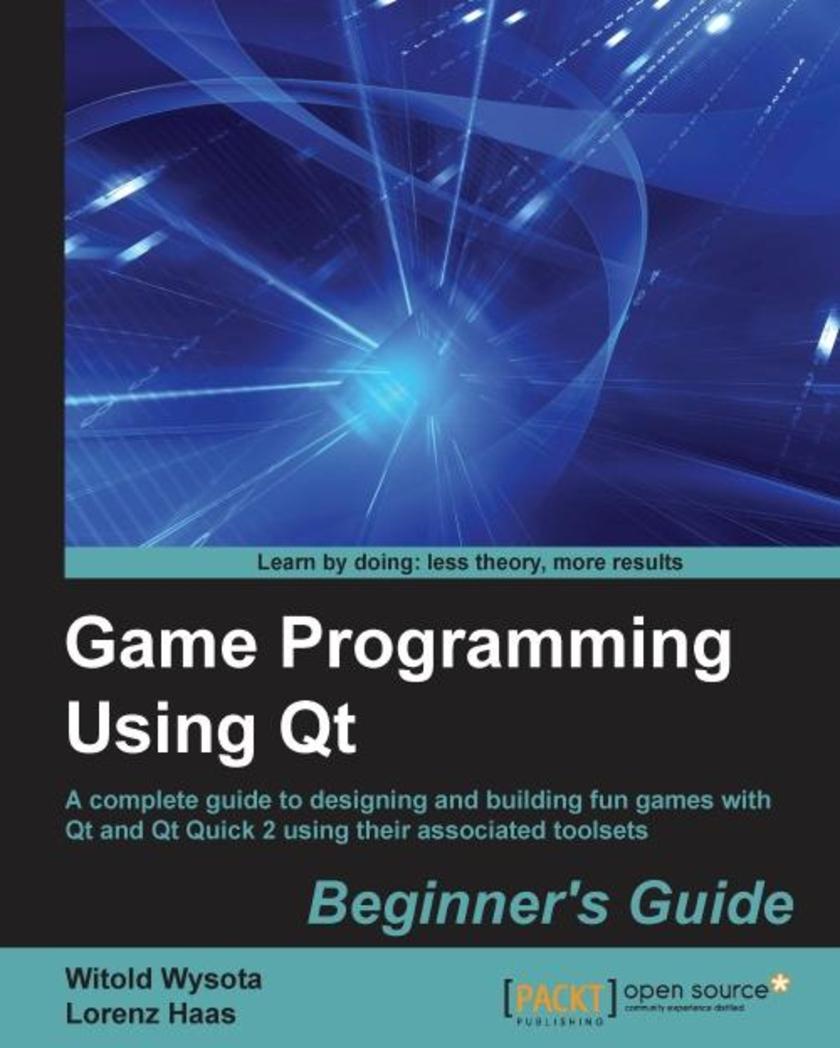
Game Programming Using Qt: Beginner's Guide
¥99.18
A complete guide to designing and building fun games with Qt and Qt Quick 2 using associated toolsetsAbout This BookLearn to create simple 2D to complex 3D graphics and games using all possible tools and widgets available for game development in QtUnderstand technologies such as QML, Qt Quick, OpenGL, and Qt Creator, and learn the best practices to use them to design gamesLearn Qt with the help of many sample games introduced step-by-step in each chapterWho This Book Is ForIf you want to create great graphical user interfaces and astonishing games with Qt, this book is ideal for you. Any previous knowledge of Qt is not required, however knowledge of C++ is mandatory.What You Will LearnInstall Qt on your systemUnderstand the basic concepts of every Qt game and applicationDevelop 2D object-oriented graphics using Qt Graphics ViewBuild multiplayer games or add a chat function to your games with Qt's Network moduleScript your game with Qt ScriptProgram resolution-independent and fluid UI using QML and Qt QuickControl your game flow as per the sensors of a mobile deviceSee how to test and debug your game easily with Qt Creator and Qt TestIn DetailQt is the leading cross-platform toolkit for all significant desktop, mobile, and embedded platforms and is becoming more popular by the day, especially on mobile and embedded devices. Despite its simplicity, it's a powerful tool that perfectly fits game developers’ needs. Using Qt and Qt Quick, it is easy to build fun games or shiny user interfaces. You only need to create your game once and deploy it on all major platforms like iOS, Android, and WinRT without changing a single source file.The book begins with a brief introduction to creating an application and preparing a working environment for both desktop and mobile platforms. It then dives deeper into the basics of creating graphical interfaces and Qt core concepts of data processing and display before you try creating a game. As you progress through the chapters, you’ll learn to enrich your games by implementing network connectivity and employing *ing. We then delve into Qt Quick, OpenGL, and various other tools to add game logic, design animation, add game physics, and build astonishing UI for the games. Towards the final chapters, you’ll learn to exploit mobile device features such as accelerators and sensors to build engaging user experiences. If you are planning to learn about Qt and its associated toolsets to build apps and games, this book is a must have.Style and approachThis is an easy-to-follow, example-based, comprehensive introduction to all the major features in Qt. The content of each chapter is explained and organized around one or multiple simple game examples to learn Qt in a fun way.
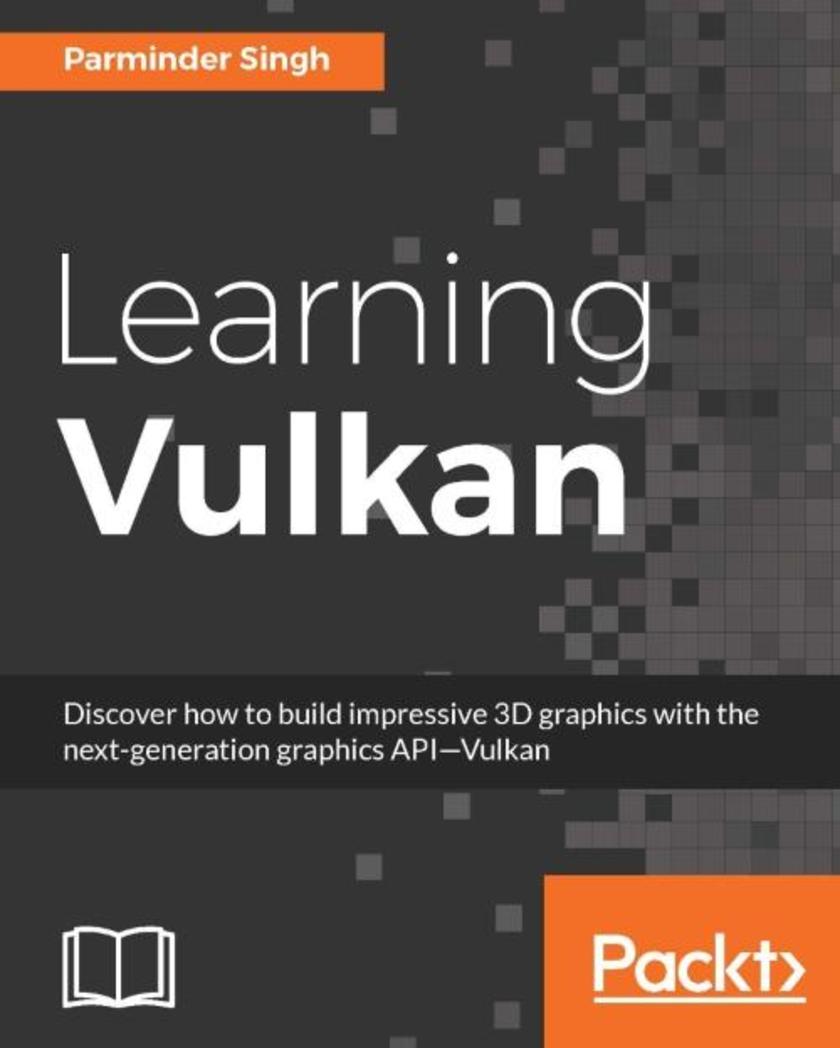
Learning Vulkan
¥99.18
Discover how to build impressive 3D graphics with the next-generation graphics API—Vulkan About This Book Get started with the Vulkan API and its programming techniques using the easy-to-follow examples to create stunning 3D graphics Understand memory management in Vulkan and implement image and buffer resources Get hands-on with the drawing process and synchronization, and render a 3D graphics scene with the Vulkan graphics pipeline Who This Book Is For This book is ideal for graphic programmers who want to get up and running with Vulkan. It’s also great for programmers who have experience with OpenGL and other graphic APIs who want to take advantage of next generation APIs. A good knowledge of C/C++ is expected. What You Will Learn Learn fundamentals of Vulkan programing model to harness the power of modern GPU devices. Implement device, command buffer and queues to get connected with the physical hardware. Explore various validation layers and learn how to use it for debugging Vulkan application. Get a grip on memory management to control host and device memory operations. Understand and implement buffer and image resource types in Vulkan. Define drawing operations in the Render pass and implement graphics pipeline. Manage GLSL shader using SPIR-V and update the shader resources with de*or sets and push constants. Learn the drawing process, manage resources with synchronization objects and render 3D scene output on screen with Swapchain. Bring realism to your rendered 3D scene with textures, and implement linear and optimal textures In Detail Vulkan, the next generation graphics and compute API, is the latest offering by Khronos. This API is the successor of OpenGL and unlike OpenGL, it offers great flexibility and high performance capabilities to control modern GPU devices. With this book, you'll get great insights into the workings of Vulkan and how you can make stunning graphics run with minimum hardware requirements. We begin with a brief introduction to the Vulkan system and show you its distinct features with the successor to the OpenGL API. First, you will see how to establish a connection with hardware devices to query the available queues, memory types, and capabilities offered. Vulkan is verbose, so before diving deep into programing, you’ll get to grips with debugging techniques so even first-timers can overcome error traps using Vulkan’s layer and extension features. You’ll get a grip on command buffers and acquire the knowledge to record various operation commands into command buffer and submit it to a proper queue for GPU processing. We’ll take a detailed look at memory management and demonstrate the use of buffer and image resources to create drawing textures and image views for the presentation engine and vertex buffers to store geometry information. You'll get a brief overview of SPIR-V, the new way to manage shaders, and you'll define the drawing operations as a single unit of work in the Render pass with the help of attachments and subpasses. You'll also create frame buffers and build a solid graphics pipeline, as well as making use of the synchronizing mechanism to manage GPU and CPU hand-shaking. By the end, you’ll know everything you need to know to get your hands dirty with the coolest Graphics API on the block. Style and approach This book takes a practical approach to guide you through the Vulkan API, and you will get to build an application throughout the course of the book. Since you are expected to be familiar with C/C++, there is not much hand-holding throughout the course of the book.
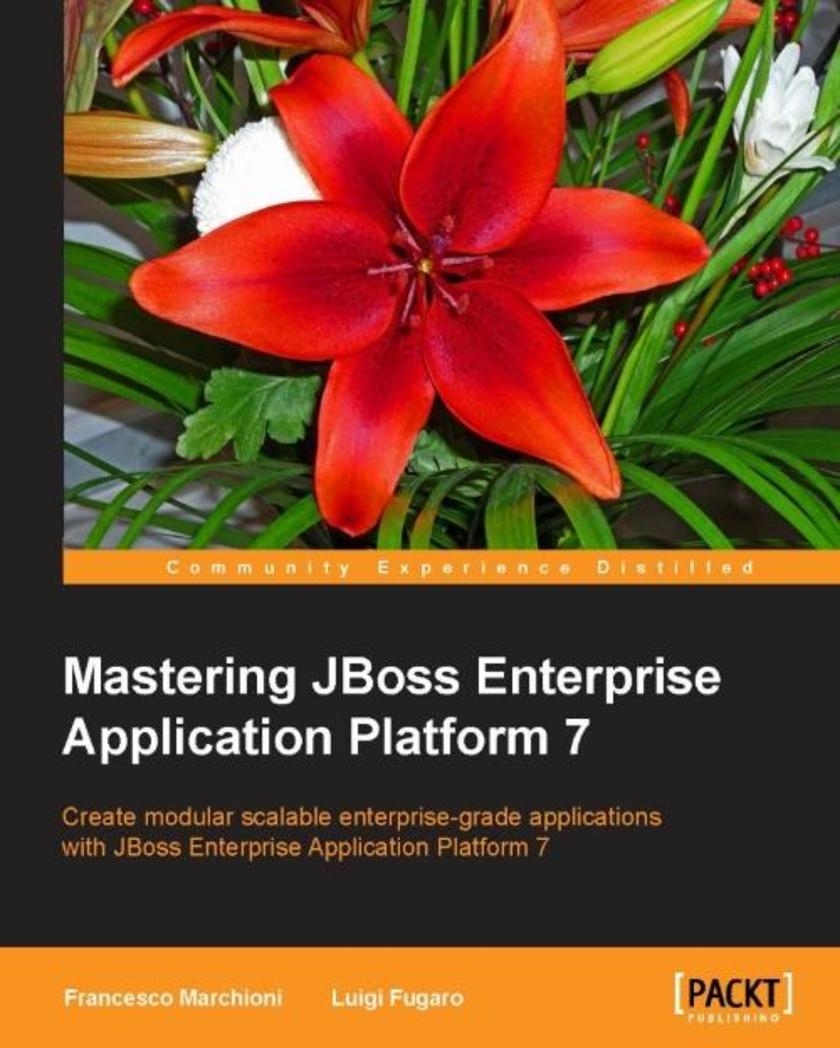
Mastering JBoss Enterprise Application Platform 7
¥99.18
Create modular scalable enterprise-grade applications with JBoss Enterprise Application Platform 7 About This Book Leverage the power of JBoss EAP 7 along with Java EE 7 to create professional enterprise grade applications. Get you applications cloud ready and make them highly scalable using this advanced guide. Become a pro Java Developer and move ahead of the crowd with this advanced practical guide. Who This Book Is For The ideal target audience for this book is Java System Administrators who already have some experience with JBoss EAP and who now want explore in depth creating Enterprise grade apps with the latest JBoss EAP version. What You Will Learn Configure services using the Command Line Interface Deliver fault tolerant server configurations Harden the application server with advanced techniques Expand the application server's horizon with tools such as like Docker/OpenShift Create enterprise ready configurations using clustering techniques. Deliver advanced security solutions and learn how to troubleshoot common network/performance issues In Detail The JBoss Enterprise Application Platform (EAP) has been one of the most popular tools for Java developers to create modular, cloud-ready, and modern applications. It has achieved a reputation for architectural excellence and technical savvy, making it a solid and efficient environment for delivering your applications. The book will first introduce application server configuration and the management instruments that can be used to control the application server. Next, the focus will shift to enterprise solutions such as clustering, load balancing, and data caching; this will be the core of the book. We will also discuss services provided by the application server, such as database connectivity and logging. We focus on real-world example configurations and how to avoid common mistakes. Finally, we will implement the knowledge gained so far in terms of Docker containers and cloud availability using RedHat's OpenShift. Style and approach If you are a Java developer who wants to level-up to modern day Java web development with the latest Java EE 7 and JBoss EAP 7, this book is the ideal solution for you. It addresses (in a clear and simple way) proof-of-concept scenarios such as clustering and cloud and container configurations, and explains how to solve common issues.
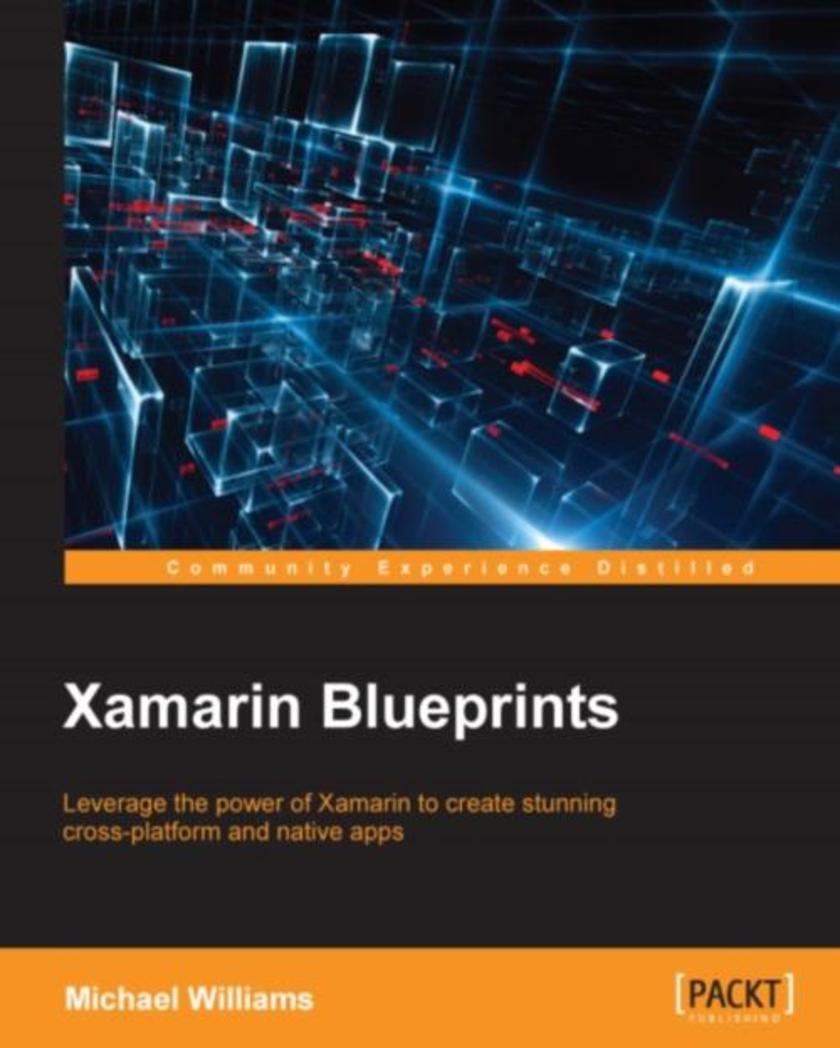
Xamarin Blueprints
¥99.18
Leverage the power of Xamarin to create stunning cross-platform and native apps About This Book Helps you get a clear practical understanding of creating professional-grade apps with Xamarin Covers Xamarin.Forms, Xamarin Android, and Xamarin iOS If you want to transform yourself from an amateur mobile developer into a professional app developer across multiple platforms, then this is the ideal book for you Who This Book Is For If you are a mobile developer looking to create interesting and fully featured apps for different platforms, then this book is the ideal solution for you. A basic knowledge of Xamarin and C# programming is assumed What You Will Learn Discover eight different ways to create your own Xamarin applications Improve app performance by using SQLite for data-intensive applications Set up a simple web service to feed JSON data into mobile applications Store files locally with Xamarin.Forms using dependency services Use Xamarin extension libraries to create effective applications with less coding In Detail Do you want to create powerful, efficient, and independent apps from scratch that will leverage the Xamarin framework and code with C#Well, look no further; you’ve come to the right place! This is a learn-as-you-build practical guide to building eight full-fledged applications using Xamarin.Forms, Xamarin Android, and Xamarin iOS. Each chapter includes a project, takes you through the process of building applications (such as a gallery Application, a text-to-speech service app, a GPS locator app, and a stock market app), and will show you how to deploy the application’s source code to a Google Cloud Source Repository. Other practical projects include a chat and a media-editing app, as well as other examples fit to adorn any developer’s utility belt. In the course of building applications, this book will teach you how to design and prototype professional-grade applications implementing performance and security considerations. Style and approach A project-based approach that will solve all your needs when it comes to creating native Android, iOS, and cross-platform apps efficiently and effectively.
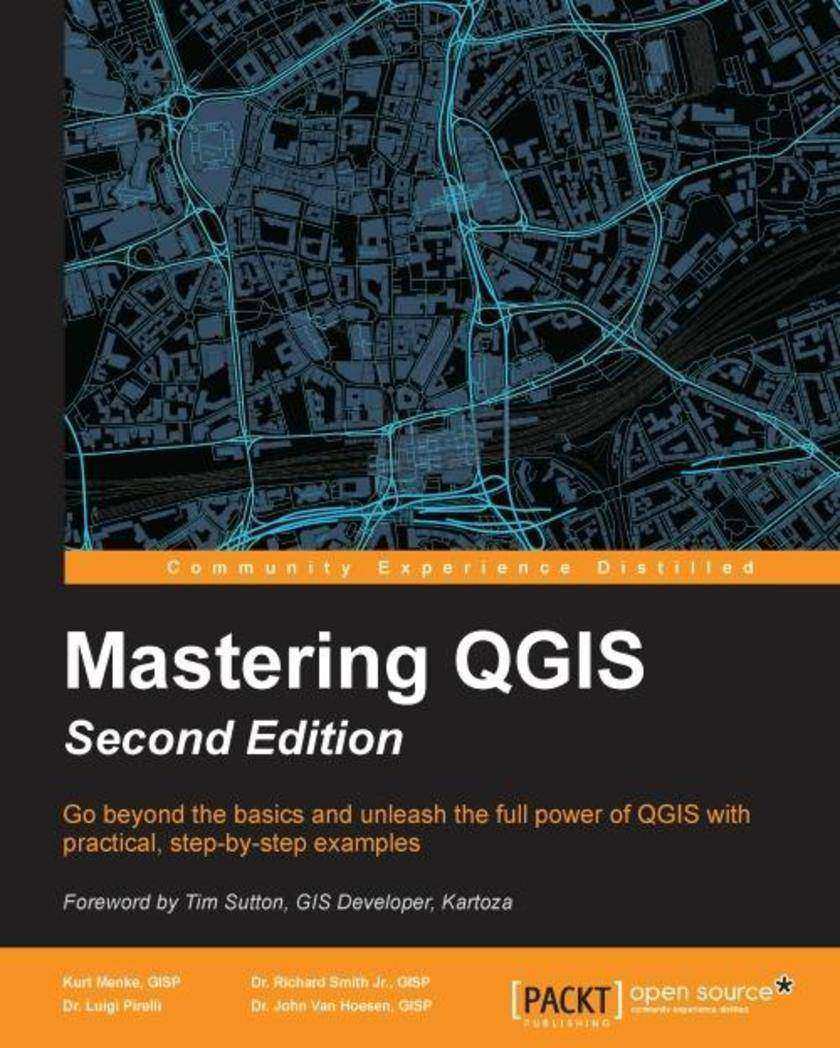
Mastering QGIS - Second Edition
¥99.18
Go beyond the basics and unleash the full power of QGIS with practical, step-by-step examples About This Book This book is your one-stop solution to all of your GIS needs using the open source QGIS Master QGIS by learning about database integration, geoprocessing tools, Python *s, advanced cartography, and custom plugins This example-rich, practical guide will help you create sophisticated analyses and maps Who This Book Is For If you are a GIS professional, a consultant, a student, or perhaps a fast learner who wants to go beyond the basics of QGIS, then this book is for you. It will prepare you to realize the full potential of QGIS. What You Will Learn Create and manage a spatial database Get to know advanced techniques to style GIS data Prepare both vector and raster data for processing Add heat maps, live layer effects, and labels to your maps Master LAStools and GRASS integration with the Processing Toolbox Edit and repair topological data errors Automate workflows with batch processing and the QGIS Graphical Modeler Integrate Python *ing into your data processing workflows Develop your own QGIS plugin In Detail QGIS is an open source solution to GIS. It is widely used by GIS professionals all over the world. It is the leading alternative to the proprietary GIS software. Although QGIS is described as intuitive, it is also by default complex. Knowing which tools to use and how to apply them is essential to producing valuable deliverables on time. Starting with a refresher on the QGIS basics, this book will take you all the way through to creating your first custom QGIS plugin. From the refresher, we will recap how to create, populate, and manage a spatial database. You’ll also walk through styling GIS data, from creating custom symbols and color ramps to using blending modes. In the next section, you will discover how to prepare vector, heat maps, and create live layer effects, labeling, and raster data for processing. You’ll also discover advanced data creation and editing techniques. The last third of the book covers the more technical aspects of QGIS such as using LAStools and GRASS GIS’s integration with the Processing Toolbox, how to automate workflows with batch processing, and how to create graphical models. Finally, you will see how to create and run Python data processing *s and write your own QGIS plugin with pyqgis. By the end of the book, you will understand how to work with all the aspects of QGIS, and will be ready to use it for any type of GIS work. Style and approach This step-by-step comprehensive guide will let you dig your teeth into working with spatial databases, creating your own QGIS plugins, and creating your own custom graphical models.




 购物车
购物车 个人中心
个人中心



